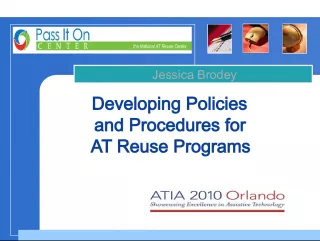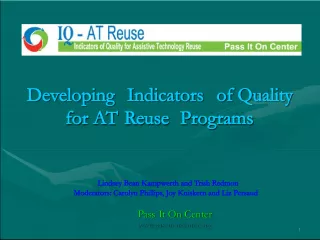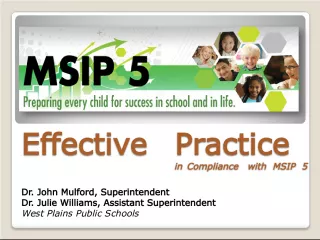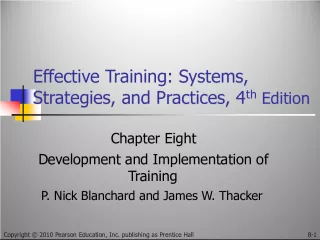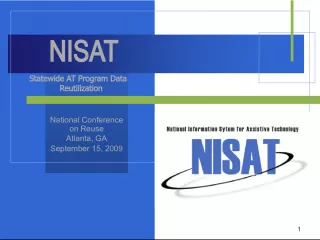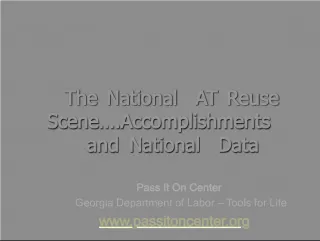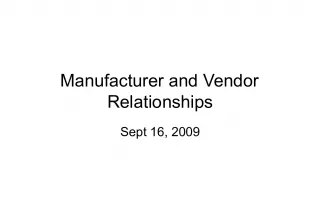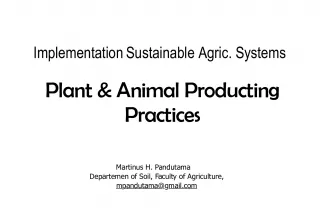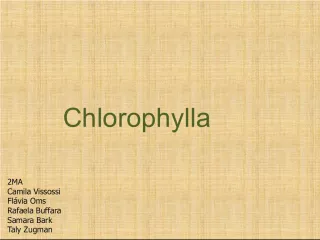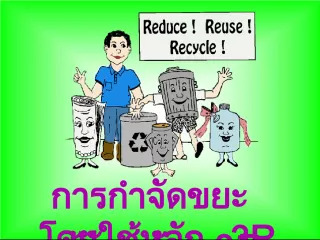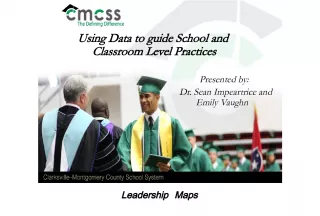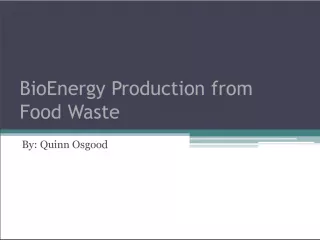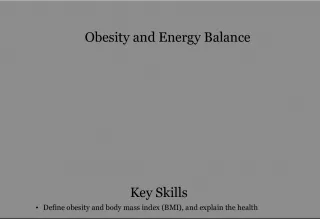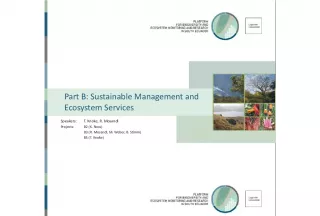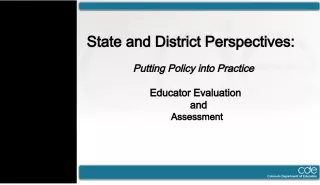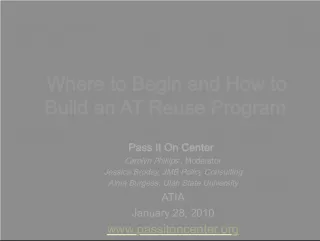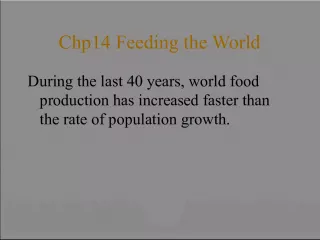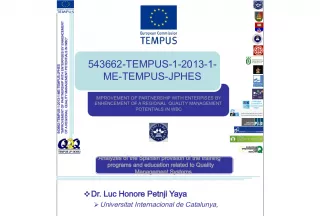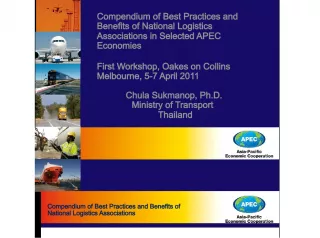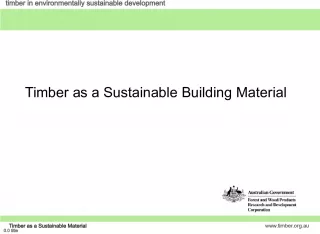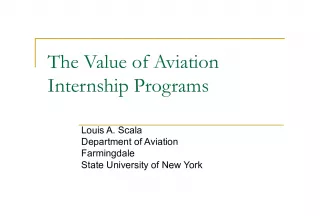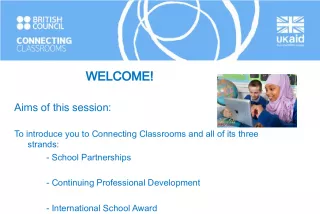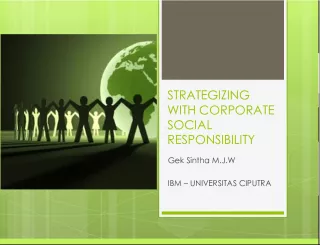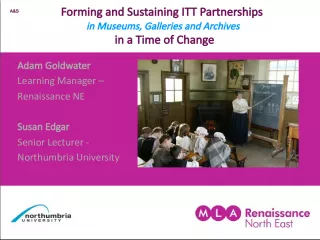Successful Strategies for AT Reuse Programs: Innovative Partnerships and Sustainable Practices


Learn from expert practitioners about successful AT reuse practices including donations, matching, sustainability, and innovative partnerships for planning futures.
- Uploaded on | 4 Views
-
 nojus
nojus
About Successful Strategies for AT Reuse Programs: Innovative Partnerships and Sustainable Practices
PowerPoint presentation about 'Successful Strategies for AT Reuse Programs: Innovative Partnerships and Sustainable Practices'. This presentation describes the topic on Learn from expert practitioners about successful AT reuse practices including donations, matching, sustainability, and innovative partnerships for planning futures.. The key topics included in this slideshow are . Download this presentation absolutely free.
Presentation Transcript
1. AT REUSE STRAND Joy Kniskern, Principal Investigator, Pass It On Center Sonja Schailble, Executive Director, FREE Foundation Barclay Shepard, Virginia Assistive Technology System Successful Strategies for AT Reuse Programs: Donations, AT Matching and Sustainability
2. Successful Strategies, Innovative Partnerships, Planning Futures
3. 3 Successful AT Reuse Practices: Donations, Matching and Sustainability
4. 4 Successful AT Reuse Practices: Donations, Matching and Sustainability
5. 5 Successful AT Reuse Practices: Donations, Matching and Sustainability
6. 6 Successful AT Reuse Practices: Donations, Matching and Sustainability
7. AT Reuse Strand 1. Understand Scope of Reuse Programs 2. Identify Successful Reuse Practices 2. Identify Successful Reuse Practices 3. Understand Resources for Practices 3. Understand Resources for Practices Why We Are Here Successful AT Reuse Practices: Donations, Matching and Sustainability 7
8. Scope: 174 Reuse Programs listed on Pass It On Center website All types, sizes, focus Different Organizational Structures National Information System on AT Reuse Data (NISAT) From State AT Program Reports Reuse is 1 of 7 activities of State AT Act Programs 2008 Reuse Data Devices – 31,069 Individuals – 24,805 Savings – $17,329,333 8
9. AT Reuse Strand 1. Donations: Acquiring AT for Reuse 2. Matching Reused AT To User Needs 2. Matching Reused AT To User Needs 3. How to Sustain Your Program 3. How to Sustain Your Program Roadmap for the Session Successful AT Reuse Practices: Donations, Matching and Sustainability 9
10. AT Reuse Strand Acquiring AT for Reuse Plan Plan Partner Partner Evaluate Evaluate Identify types and volume of AT you will and will not accept, consistent with program resources Build partnerships to achieve the goals Use budget and ROI scenarios to determine success of AT acquisition strategies Successful AT Reuse Practices: Donations, Matching and Sustainability 10
11. AT Reuse Strand Acquiring AT for Reuse First Things First ….. • Write your Equipment Gifting Policy! * Determine equipment you will accept and not accept *Gives you an “out” *Boundaries for delivery and pick up of equipment *Have a “Plan B” for unacceptable donations • Determine your current resources of *staff/volunteers *time *storage space (For all phases of program operations ) Successful AT Reuse Practices: Donations, Matching and Sustainability 11 Plan Plan
12. What you may end up with if you DON’T write that gifting policy!! 12
13. AT Reuse Strand Establish Vendor and Manufacturer Partnerships Successful AT Reuse Practices: Donations, Matching and Sustainability 13 Hold Well- Planned Donation Drives Target Marketing to For-Profit Organizations Build Agency Partnerships Partner Partner Acquiring AT for Reuse
14. AT Reuse Strand Vendor and Manufacturer Partnerships Identify manufacturers and vendors of specific equipment you will refurbish and consider asking for: Assistance with parts, determining whether certain equipment is worth refurbishing, Donation of equipment or usable parts they no longer need Referral of customers they cannot serve Distribution of Reuse Program Information and/or sticker on equipment they distribute to customers who will call you when they no longer need it Volunteers Assisting with delivery and set up of certain equipment Successful AT Reuse Practices: Donations, Matching and Sustainability 14 Acquiring AT for Reuse
15. AT Reuse Strand Vendor & Manufacturer Partnerships to Acquire AT Virginia Reuse Network and FREE Foundation - Four Roanoke suppliers sticker specified AT for VATS for future donations. Kansas Equipment Exchange Program – vendors receive payment to refurbish gently used, high cost DME Med-Trade, Abilities Expo, other events – take home displayed or used AT Successful AT Reuse Practices: Donations, Matching and Sustainability 15 Acquiring AT for Reuse
16. AT Reuse Strand Well-Planned Donation Drive to Acquire AT Start planning six months before event Determine specific equipment you will accept for gifting Identify partners – Church, vendors, non-disability organizations, volunteer organizations like Hands On Atlanta Work through logistics: who will be there, storage and transportation of items, donation receipts, etc. Develop a marketing plan: who, what, where, how Successful AT Reuse Practices: Donations, Matching and Sustainability 16 Acquiring AT for Reuse
17. Two Examples of Well-Planned Donation Drives Kansas Equipment Exchange Program – 14 sites across Kansas, same day, multiple partner organizations, radio PSAs 17 Acquiring AT for Reuse
18. AT Reuse Strand Targeted Marketing to For-Profit Organizations Many Programs: Medical Community (Hospitals, Physical Rehab. Centers, Home Health Agencies) Agencies that deal with end of life (Funeral Homes, Long Term Care Facilities DME Providers (Project Mend – Hospitals and Carex Pharmaceuticals (15–20 pallets twice a year of walkers, rollators, shower chairs, bedside commodes, tub transfer benches, canes, crutches, raised toilet seats, adult diapers, etc.) Recyclers Successful AT Reuse Practices: Donations, Matching and Sustainability 18 Project MEND Warehouse Acquiring AT for Reuse
19. AT Reuse Strand Partnerships with Agencies to Acquire AT • Determine what Agencies in the Community are a “Natural” place to receive AT Equipment Examples: Goodwill, Salvation Army, Churches, Lions Club, Ruritans, Rotary Club, Houses of Worship • Must be a “Win-Win” Situation (what does the agency need that you can supply?) * A means of offering consumers choice of new or gently used refurbished equipment to stretch state or insurance funds? * A way to provide stop-gap, temporary or back-up AT that the agency is unable to provide or to provide quickly? Successful AT Reuse Practices: Donations, Matching and Sustainability 19 Acquiring AT for Reuse
20. Partnerships with Agencies to Acquire AT Examples from VATS and the FREE Foundation • Goodwill Industries donates all DME received to FREE Foundation • 40K of VR Stimulus Funds over 2 years to refurbish VR- procured AT; solved storage issues with returned VR AT; and, 419K from Commonwealth Brain/Spinal Injury Trust Fund for over 3 years. • Commissioners of Dept. of Medical Assistance Services and Division of Rehabilitation Services partnered on letter to Roanoke vendors to sticker specified AT procured for Medicaid beneficiaries for VATS – extended to all equipment supplied. 20 Acquiring AT for Reuse
21. 21 Q.I. #4.2 Matching Device to Customer Appropriately trained professionals follow documented procedures to match customers to devices. Key Factors for Consideration The program has documented procedures based on standard professional practices and uses professionals that have training appropriate to the situation, the technology solution and the individual to match customers to devices. (The professional may vary, depending on the situation and type of technology, and may be a physical therapist, occupational therapist, assistive technology professional, speech language pathologist, assistive technology supplier, rehabilitation engineer, or ergonomic specialist.) Indicators of Quality for AT Reuse Successful AT Reuse Practices: Donations, Matching and Sustainability Matching Reused AT to User Needs
22. 22 Professional Partnerships for Matching AT More Successful “Win-Win” Partnerships! • Paraquad –Washington University / OT Program • FREE of Northern Shenandoah Valley / University of Shenandoah • FREE of Roanoke – Jefferson College of Health Sciences / PTA Program • FREE of Richmond – Virginia Commonwealth University / OT Program Matching Reused AT to User Needs
23. 23 When You don’t have the needed piece of equipment: Identify resources that could be helpful with specific pieces of equipment i.e. illness or impairment specific organizations, Medical Community, faith based organizations, etc. Start a Virtual Network Examples: Virginia Reuse Network (VRN) Kansas Equipment Exchange Program Finding the Perfect Match Successful AT Reuse Practices: Donations, Matching and Sustainability Matching Reused AT to User Needs
24. The Virginia Reuse Network Locations
25. Projected Expenses by Program Size TEXT TEXT TET TEXT Small ($40-$50K) Medium ($60-$80K) Large ($90-$100K) Super Sized ($140K +) Personnel 40,000 70,000 80,000 140,000 Travel – in-state 500 500 1,000-2,000 3,000 Project supplies 200 500 1,000 1,500 Web site hosting 900 500-5,000 500 --------------- Phone 500 500 1,000-1,500 1,500 Printing 500 500 500-750* * *Public Rel./ Marketing 200 ----- 4,650 2,500 Successful Practices: Donations, AT Matching, and Sustainability
26. FREE Foundation Operational Budget 2011 Program Revenues Grants $176,079 United Way 1,200 Corporate Contributions 4,000 Individual Contributions 2,100 Recycling 1,000 Total Revenues: $184,379 2011 Program Expenses Personnel / Fringes / Taxes $92,254 Travel / Training 10,000 Outreach / Marketing 5,000 Consultant 22,500 Phone / Fax / Internet Host 4,000 Office Supplies /Postage / Shipping 7,225 Legal & Accounting 14,000 Liability Insurance 10,500 Rent & Utilities 8,400 Equipment Storage 4,200 Refurbishing Supplies / Program Supplies 5,000 Organizational Dues 1,300 Total Expenses: 184,379
27. Step 1 Step 2 Step 3 Step 4 Successful Practices: Donations, AT Matching, and Sustainability From Indicators of Quality for AT Reuse The program has a sustainability plan that is a written, well- developed document. Program Outcome Data: Program uses outcome measure and collects data from participants Sustainability Steps to Success Program Statistics: Program collects output served). Program Evaluation Plan: Program uses the output and outcome data to modify the program.
28. IQ-ATR: Online Resources for Sustainability Planning and Assessment IQ-ATR PDF Download: http://www.passitoncenter.org/Portals/passitoncenter/uploa ds/IQ-AT%20Reuse%20Report%20rev%2008032010.pdf Take the IQ-ATR Online Program Assessment at: www.passitoncenter.org/IQ-ATReuse
29. Successful Practices: Donations, AT Matching, and Sustainability 29 2.1 Sustainability Planning The program has a sustainability plan that is a written, well-developed document. Key Factors for Consideration The program has a written, well-developed plan for long-term sustainability that addresses: Diversification of sources of income Strategies for enhancing community support Retention of employees and volunteers Succession planning for program leadership Sustainability Steps to Success
30. Successful Practices: Donations, AT Matching, and Sustainability 2.2 Program Statistics The program collects output data (e.g., number of devices distributed, number of devices donated, number of customers served). Key Factors for Consideration The program uses a computer database to collect data, follows the data and looks for trends in: Number of customers Devices donated Devices distributed Needs not met Sustainability Steps to Success
31. Successful Practices: Donations, AT Matching, and Sustainability 31 Sustainability Steps to Success 2.3 Program Outcome Data The program uses an outcome measure and collects data from participants about if and how they use the device they received from the program (participation of person, quality of life, how they use the device, if they are satisfied with the device and services received).
32. Yes/No and Open-Ended Questions: How is the equipment working for you? Do you feel this equipment has increased your independence when used? Were you mobile (able to walk) before receiving this equipment? Are you mobile (able to walk) with the use of this equipment? Quantitative Responses: How many falls a week did you have before receiving the equipment? How many falls a week are you having since you received this equipment? How many Emergency room visits per month did you have before receiving this equipment? How many Emergency room visits have you had per month since you received this equipment? How many Hospital stays per month did you have before receiving this equipment?
33. Tell Your Story Better with Statistics and Outcomes! Tell Your Story Better with Statistics and Outcomes! Acceptable… • In FY 2010, the FREE Foundation served 502 individuals. • The FREE Foundation is a good steward of its money. • The FREE Foundation helps individuals with disabilities to be more independent. …Better! • Since 2006, Virginia’s formal network of reuse programs served 8,025 Virginians with disabilities , gifting 9,537 AT devices valued at $3,473,646. • For every $1.00 spent by FREE on its mission, $33.40 is returned to the community. • R ecipient outcome surveys show 80% -100% decrease in falls, ER visits and hospitalizations.
34. Item Average Retail Cost Recycling Ratio Walkers, canes, & devices Wheelchair $100 1:2 $900 1:4 Power Chair $7,000 1:10 Reuse Leverage Reuse Leverage
35. Successful Practices: Donations, AT Matching, and Sustainability 35 2.4 Program Evaluation Plan The program uses the output and outcome data to modify the program. Key Factors for Consideration The program collects data and shares it within the organization to drive a continuous improvement process and it also uses the data to support requests for new or additional funding. Sustainability Steps to Success
36. Sept 08 Oct 08 June 09 April 09 Dec 08 Sept 09 Jan 09 Mar 09 May 09 VATNet Sustainability Planning Meeting – Charlottesville, Va Start New Job! Model Demonstration Mtg., St. Louis, MO Virginia AT Reuse Annual Mtg. Planning Comm. Aug 08 Virginia AT Reuse Annual Mtg, Richmond, Va. Annual Mtg Debrief / Feedback/ AT Council Apply for CNI Grant (and others) Request VR Funding (ARRA) Budget AT Act $ for Reuse Information Re: Kansas Experience / Medicaid RFP for Virginia Reuse Award Grants DMAS Meeting July 09 Aug 09 Reuse Press Release & Follow-up Articles
37. “5-Legged Stool” Approach Virginia Reuse Network – Sustainability State AT $ (VATS) (Ongoing Funding) Legislative ARRA 2009 (FY 2009 & 2010) Long Term Grants (VATS with Reuse Partners) CNI Trust (FY 2010, 2011, 2012) Va. Medicaid Note: VATS RFP ($585K) Combines CNI, ARRA & State AT Monies
38. Successful Practices: Donations, AT Matching, and Sustainability 38 Examples of Sustainable AT Reuse Programs Friends of Disabled Adults and Children • Church contributions • Donations at Point of Service • Golf Tournament and Fun Run Events • Appeals through newsletter and mailers to customers • Fees for Refurbishing Services • Waiver Program fees • State AT Act Program – Tools for Life • Earned Income from Thrift Store • Foundation Grants • County Grants • Grants for Ramps for Champs program • County Stimulus Funds - $350K for major facility renovations
39. DISCLAIMER This work is supported under five-year cooperative agreement #H235V060016 awarded by the U.S. Department of Education, Office of Special Education and Rehabilitative Services, and is administered by the Pass It On Center of the Georgia Department of Labor – Tools for Life. However, the contents of this publication do not necessarily represent the policy or opinions of the Department of Education, or the Georgia Department of Labor, and the reader should not assume endorsements of this document by the Federal government or the Georgia Department of Labor. Speaker contact 39 Joy Kniskern joy.kniskern@dol.state.ga.us Principal Investigator, Pass It On Center Barclay M. Shepard Barclay M. Shepard Virginia Assistive Technology System (VATS) Virginia Assistive Technology System (VATS) Email: Barclay.Shepard@drs.virginia.gov Email: Barclay.Shepard@drs.virginia.gov Phone (757) 309 – 1079 Phone (757) 309 – 1079 Sonja Schaible Sonja Schaible FREE Foundation (F.R.E.E.) FREE Foundation (F.R.E.E.) Email: Sonja@Free-Foundation.org Email: Sonja@Free-Foundation.org Phone: (540) 777-4929 Phone: (540) 777-4929
